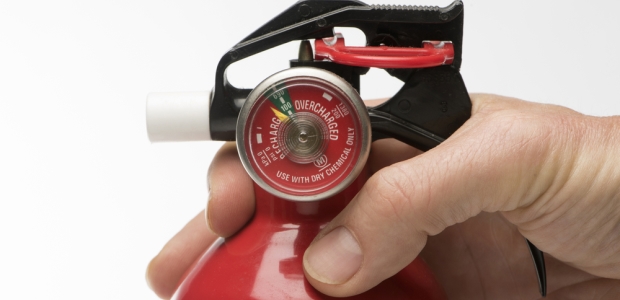
Holiday, Needs Survey Put Added Emphasis on Fire Safety
NFPA said its latest survey of U.S. fire departments found there are extensive needs by departments of all sizes and in every area. USFA reminds us that home fires double on Thanksgiving.
Cooking fires keep the U.S. fire service especially busy during the holiday season, including the Thanksgiving holiday week, and this year, a needs assessment from the National Fire Protection Association has put even more emphasis on the challenges these responders and their agencies face.
Releasing the results Nov. 9, NFPA said its latest survey of fire departments found there are extensive needs by departments of all sizes and in every area, including needs in staffing, training, facilities, apparatus, personal protective equipment, and health and wellness. "Overall, the smaller the community protected, the greater the need," stated NFPA, which sent out the survey in September 2015 to all U.S. fire departments.
"Today's fire departments are being called upon to protect communities from much more than fire, commonly responsible for additional areas such as emergency medical services, hazardous materials response, active shooters, enhanced technical rescue, and wildland-urban interface firefighting and other emerging challenges," said Jim Pauley, NFPA's president and CEO. "As fire departments work hard to meet the many needs of their communities, we need to ensure that they have the resources to do their jobs safely and effectively."
He said the survey "represents the most comprehensive look at the needs of U.S. fire departments, and whether those needs are greater than they were five years ago." NFPA has been conducting the survey every five years since 2001.
Key findings from this survey included:
- Forty-nine percent of all fire departments have not formally trained all of their personnel involved in structural firefighting, up from 46 percent in 2010.
- Sixty-nine percent of departments reported some of their self-contained breathing apparatus equipment is at least 10 years old, up from 55 percent in 2010.
- More than two-thirds (72 percent) of departments reported that some of their personal protective clothing is at least 10 years old, up from 63 percent in 2010.
- Forty-three percent of fire stations are at least 40 years old, up from 32 percent in 2001, when the first needs assessment survey was conducted.
- Only 27 percent of fire departments have a basic firefighter fitness and health program, down from 30 percent in 2010.
However, it also found that 43 percent of all fire department engines and pumpers are at least 15 years old, down from 51 percent in 2001.
Noting that the number of home fires doubles on Thanksgiving, the U.S. Fire Administration offered fire safety tips for Thanksgiving:
- If you are roasting your turkey, make sure you set a timer.
- If you are frying your turkey, use a fryer with thermostat controls; thaw your turkey completely; don't overfill the pot with oil; keep children and pets at least 3 feet away from the fryer; and always use the fryer outdoors.
Cooks should stay in the kitchen when they are frying, boiling, or broiling food. In addition:
- Keep the area around the stove clear of packaging, paper towels, and dish cloths -- anything that can burn.
- Be sure to clean up spills as they happen.
- Be prepared: Keep a large pan lid or baking sheet handy in case you need to smother a pan fire.
- Turn pot handles toward the back of the stove so you don't bump them.